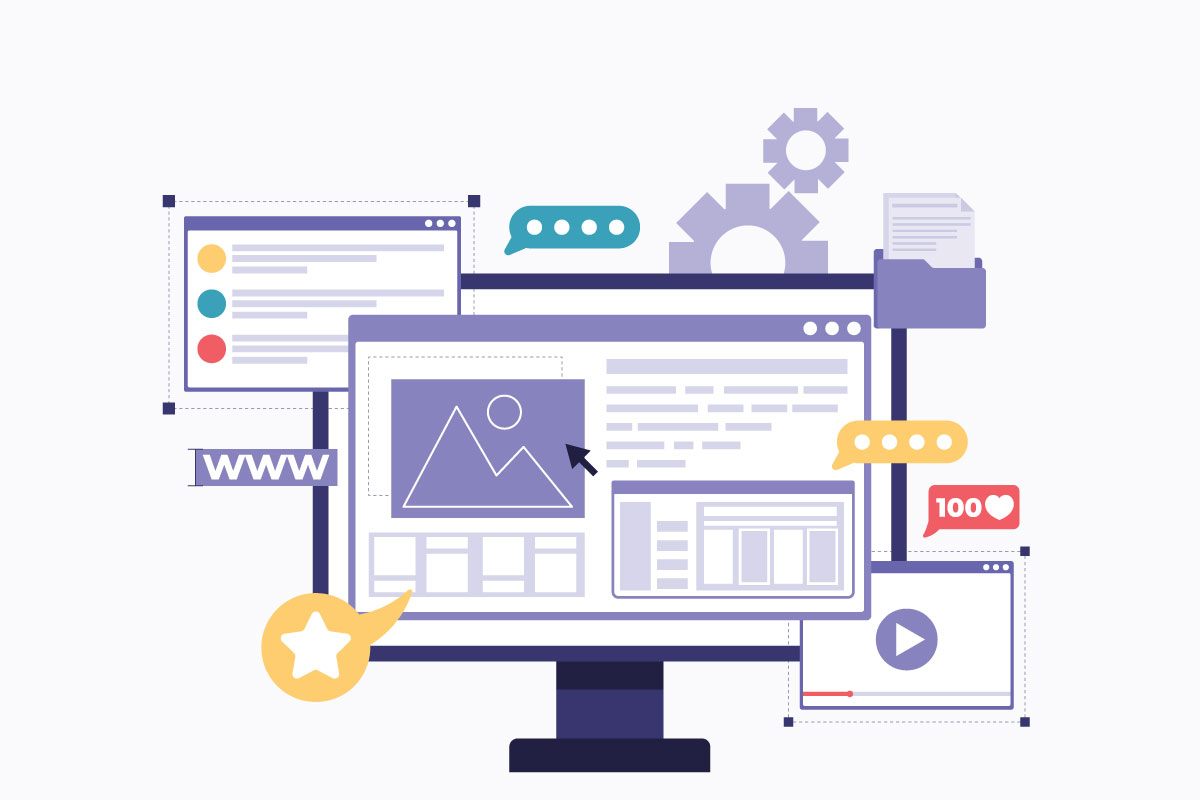A healthcare application is a powerful tool that can be used to improve the lives of people. It has been shown to reduce medical errors and lower costs for both patients and insurance companies alike. But creating such an application is not easy, as there are numerous considerations that must be made before you even begin development. This blog post will tackle these issues head-on, providing an overview of what it takes to build a successful healthcare app.
Outline of the Industry Market
The first thing you should know is that there are some challenges facing the healthcare industry. While mobile health apps have been in use for several years, they haven’t exactly achieved widespread adoption among healthcare providers and users alike. This has happened because of the sheer number of different systems that must be integrated into one application to provide an overall product worth using.
Must-Have Features in a Health Application
There are several features that must be included in any healthcare application:
Be compatible with various devices, including smartphones & tablets
It should also support both iOS and Android platforms to ensure maximum compatibility for users around the world.
Provide user authentication
This ensures only authorized individuals can see their patient data or make changes to it as needed. It’s worth noting that many apps use biometric recognition methods instead of usernames/passwords alone, which provides an added layer of security against unauthorized access attempts.
Easy sharing
Enable easy sharing between patients, family members, doctors, etc., so everyone involved has up-to-date information on a person’s health status at all times. Notifications sent via email or text message are a great way to keep people informed of these changes.
Be cloud-based
This ensures a person’s information is accessible from anywhere, regardless of the device they’re using at any given time (provided it runs on one of the previously mentioned platforms). Files should also be compatible with Microsoft Office and Google Docs for those who prefer working offline as well as online. Both options present benefits that need to be accounted for when building an application like this.
Since healthcare apps are used in such critical situations, all data must remain up-to-date at all times so users can rely on its accuracy after it has been sent/received by other parties involved, including doctors and insurance companies alike. This means frequent backups, which may include full state restoration in the case of a device malfunction or software crash.
Provide an easy-to-use interface
The more intuitive your app is, the faster people will adopt it and begin using it regularly, which can lead to increased productivity on their end. You could take many different approaches here, but they all boil down to designing for ease of use while also including features that make sense given how things work within this industry.
5 Essential Steps to Create a Medical App
Step 1 – Clarify the Mobile Platform
Firstly, you should define the platform for which you want to build an app. This will help create a better strategy around what features need to be added to your mobile application, depending upon whether it is Android, iOS, or both platforms that are being targeted. If building apps for multiple devices, then one has to consider separate design and development processes along with testing procedures involved before releasing the final product so as not to have any differences between two applications built separately.
Depending upon where your target audience lies, select your device(s) accordingly – if they are mostly young adults who spend most of their time online through smartphones, then opt for developing just an android/iOS based medical application, but if the user-base consists of people across all age groups & nationalities, then building an app for both Android & iOS along with a web application will be the best possible approach.
Step 2 – Business Analysis
This is where the business analysis begins – do your research about what kind of features are already available in similar applications across devices. Then, spend enough time identifying which features you want to include and those that need to be removed since no app can have all possible user-friendly functions included at once due to limited screen space on smartphones & tablets.
Once you know exactly what needs to be done, create a prototype integrated with core components before testing its market viability through surveys or focus groups who fit into your target audience for this healthcare application development project. This will help you decide if more work should be put into developing additional functionalities around these base sets of features built during the initial stages of the mobile application creation process.
Step 3 – Start with the UX/UI Design
Once your business requirements have been identified, and a prototype is ready for testing, the next step involves designing an application that will be user-friendly & intuitive enough to get people using it regularly without any major problems.
This stage of the mobile app development process requires you to get into the shoes of every potential target audience member who might use this healthcare management solution daily to make sure they can understand how each feature works easily by following some basic yet straightforward steps.
In case there are too many users across various age groups with different levels or types of education, then creating separate UIs (user interfaces) around these core features may also be required – but keep in mind not to add too much information screen at once since most smartphones do not have big screens as compared to tablets.
After this stage of the mobile application development process, you can now test your prototype with the same users who were surveyed earlier & check if they are able to understand how each feature works or not – make sure that there is no room for confusion. If everything goes well then it’s time to move onto the next phase!
Step 4 – Convene the Production Team
At this stage, you will need to get your team in place. If you already have a group of people within the company who fit into these roles required for mobile application development, then it’s great – if not, but one or more members can take up multiple responsibilities, then that is just as good, and they should be assigned accordingly.
Depending on how big the project is going to be (in terms of its scope), decide on what kind of resources are needed & add them all together while taking care of communication issues. This is necessary since having too many members working separately without knowing about other people’s work may lead to gaps between each phase, resulting in delays. It also becomes hard to track down errors when too much time has passed by, so try and maintain a single communication channel among all team members to keep things running smoothly.
Lastly, make sure that each member of the product team clearly understands your requirements before moving on to the next stage so as to avoid further issues during the implementation and testing stages.
Step 5 – Develop and Test the Application
Once the team is in place & all members are clear about what needs to be done, it’s time to start development! This process may take some time depending upon how big your healthcare application idea is, along with the type of technology you’re using for this project. Often, organizations choose WordPress because it has a vast community that constantly updates its themes & plugins while also providing assistance through forums and online documentation – making sure that everyone on your project can easily use these tools without any issues.
If you have decided not to go with WordPress, then make sure that whatever CMS (content management system) or framework you’ve chosen does support at least minimal version control, so developers don’t run into issues later when trying to find out why things are broken. For safety reasons, it is also essential to test your application on multiple devices by every team member who had a hand in creating this healthcare management solution. In addition, make sure they don’t forget about testing on older versions of iOS or Android since having too many key features due to lack of compatibility can lead to issues down the line if not detected beforehand.
HIPAA Security Compliances
HIPAA is the acronym for Health Insurance Portability and Accountability Act and is a primary factor when building a medical app. This US act provides legal protection to patients if their personal information gets lost or stolen, which could result in identity theft. The last thing any hospital needs after dealing with emergencies all day long is getting sued by its own patients due to the lack of security measures implemented inside the building.
That’s why it becomes vital for hospitals & clinics to follow HIPAA guidelines in order to avoid such scenarios. Security compliance includes taking appropriate steps towards ensuring patient data confidentiality, integrity, availability, and accountability, along with protecting against unauthorized access or use. You may also want to read about the steps involved in designing and developing a custom mobile application.
What are the key features of HIPAA compliance?
HIPAA compliance means taking specific steps towards protecting your application from security threats and complying with the new set of rules and regulations introduced by HIPAA that can be applied to any healthcare organization. There are five major components of the HITECH (Health Information Technology for Economic and Clinical Health Act) which is a part of HIPAA:
Security management process – Implement policies & procedures, access controls, monitoring activities & audits, risk analysis, etc.
- Privacy – Ensure confidentiality as well as disclosure appropriate use of PHI (protected health information).
- Electronic data interchange (EDI) – Allows sharing patient records electronically between organizations while ensuring strict adherence to privacy standards.
- Data backup and disaster recovery plan – Ensures availability in case of a disaster that needs to be tested on a regular basis.
- Security awareness & training – All members of the organization should receive proper security guidelines and keep them in mind while working with PHI data. Use cases for internal apps: While building an application, it is important to understand what type of user will use your app to build specific features according to their requirements. In case you have decided to implement HIPAA compliance measures, then make sure all teams involved know about these rules and how they can affect the development process along with the testing stage.
Design and Development Considerations
Design & development are the most crucial stages of building a custom healthcare application. Make sure that you’re aware of all HIPAA compliance elements, understand its impact on design and usability, and provide enough time to the QA team to test each feature before release.
Usability
Ensure the user interface is simple for your target audience who may be using certain healthcare apps in their daily lives already. The last thing you’d want is for users to get lost trying to navigate your application, which is why usability is one of the primary elements of a successful medical application.
Security
Enabling two-factor authentication adds an additional security layer, making it harder for hackers to access PHI data. You will need to decide whether or not you want users to have automatic backups for privacy reasons with everything stored locally vs. encrypted cloud storage where security tokens are used instead of passwords.
Costing
The total cost of building a healthcare application varies depending on the requirements you have in terms of features and their complexity. Your budget should take into account factors like designing, development, and testing, which can last anywhere from six months to one year. Additionally, you may also need to spend money on legal & compliance requirements, marketing, along with hiring more employees.
In conclusion, a healthcare application is a complex system that needs to be built in compliance with HIPAA norms. Therefore, the success of your product lies not only in the quality and features you have implemented but also in ensuring it’s compliant with all security & privacy measures that are required by law.




